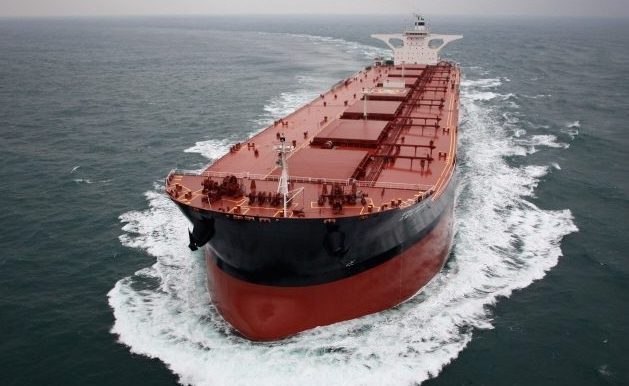750 days after dramatic sinking, report finally published into Stellar Daisy’s hull failure

It’s taken fully 750 days but finally over the Easter weekend the Marshall Islands flag issued its report into the sinking of the Stellar Daisy very large ore carrier, citing a catastrophic structural failure of the ship’s hull for the deadly disaster that killed 22 seafarers. The keenly awaited report into how the very old converted tanker sank has immediately attracted criticism from the ship’s class society, Korean Register (KR).
The Stellar Daisy, owned by Korean owner Polaris Shipping, sank in the South Atlantic on March 31, 2017 with the loss of 22 of the 24 crew onboard.
The Marshall Islands’s investigation suggests the likely direct cause of Stellar Daisy foundering was a rapid list to port following a catastrophic structural failure of the ship’s hull that resulted in a loss of buoyancy and uncontrolled flooding. The structural failure and flooding are thought to have begun in the No. 2 port water ballast tank (WBT) and then progressed rapidly to include structural failure and flooding in multiple WBTs, voids and cargo holds.
The structural damage on the 1993-built ship was likely due to a combination of factors, the flag report stated, including the strength of the ship’s structure being compromised over time due to material fatigue, corrosion, unidentified structural defects, multi-port loading and the forces imposed on the hull as a result of the weather conditions the vessel encountered in the South Atlantic.
Stellar Daisy was converted from a VLCC to a VLOC in 2008 at a shipyard owned by Cosco in China. The design of the converted ship contributed to the ship’s demise, the Marshall Islands’s investigation posited. The large port and starboard wing tanks increased the potential for a major structural failure and loss of buoyancy in the event that one or more of these tanks flooded while the ship was in a laden condition, with the flag also noting a gap in the additional safety measures for bulk carriers contained in SOLAS, Chapter XII, regulation 5 which does not require an assessment to ensure bulk carriers of 150 m or more in length of double-side skin construction, designed to carry solid bulk cargoes with a density of 1,000 kg per cu m and above, constructed on or after July 1, 2006 with any part of the longitudinal bulkhead located within B/5 or 11.5 m, whichever is less, inboard from the ship’s side at a right angle to the centerline at the assigned summer load line can withstand the flooding of any one wing tank in all loading and ballast conditions.
The flag went on to detail what it described as “ineffective assessments” of structural damage identified when the ship was in drydock in 2011, 2012 and 2015.
Potential contributing factors to the sinking cited by the Marshall Islands include inconsistent compliance by Polaris Shipping with both KR requirements for reporting structural defects; ineffective enforcement by KR of the classification society’s rules to ensure Polaris Shipping was reporting identified damage; non-compliance by KR with the requirements in the 2016 RO Agreement to notify the flag administrator of, among other things, “any dangerous occurrences, accidents, machinery or structural breakdowns, or failures that they are aware of on a Vessel”.
Responding to the damning report, Busan-based KR agreed with much of the findings, including the likely catastrophic structural failure, but took issue with claims its structural analysis was conducted improperly as well its failure analysis. KR has said it plans to review its reporting procedures to avoid any future misunderstandings.
The sinking was the most high profile dry bulk casualty this decade, thanks to the tireless work of the families of the victims who fought hard for answers, culminating in an expensive, daring submarine trip to the bottom of the Atlantic earlier this year to retrieve the vessel’s voyage data recorder (VDR).
The much delayed findings of the Marshall Islands concur with the first hand reports of the Stellar Daisy’s two survivors – Renato Daymiel and Jose Cabrahan – who more than two years ago detailed how the ship went down very rapidly after listing to port.
In January this year a court in South Korea granted the arrest warrant for the former head of maritime affairs at Polaris Shipping. The court however dismissed the arrest warrants sought by the Busan Coast Guard for the head of Polaris as well as an inspector from KR and two other men who worked for a private survey firm.
Further court rulings are now likely as data from the VDR is analysed and the Marshall Islands’ report is evaluated.
The report can be accessed here.
